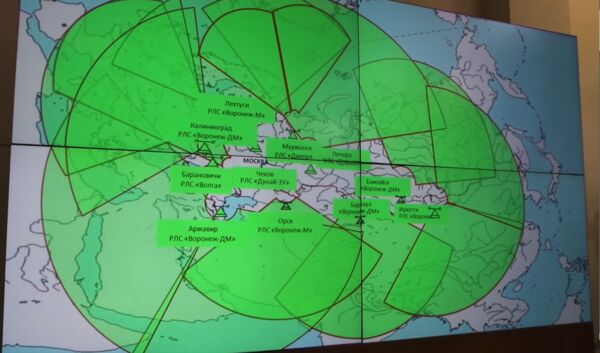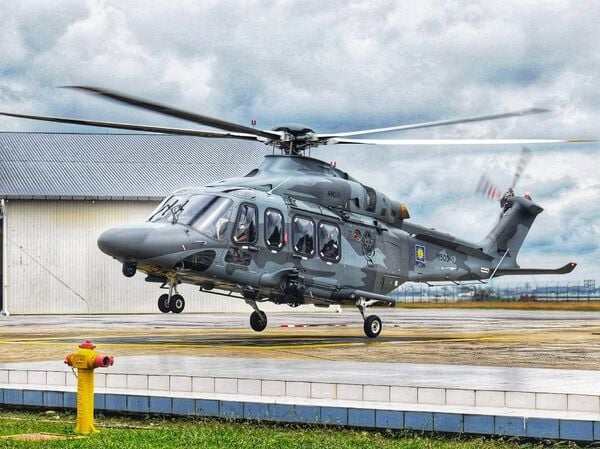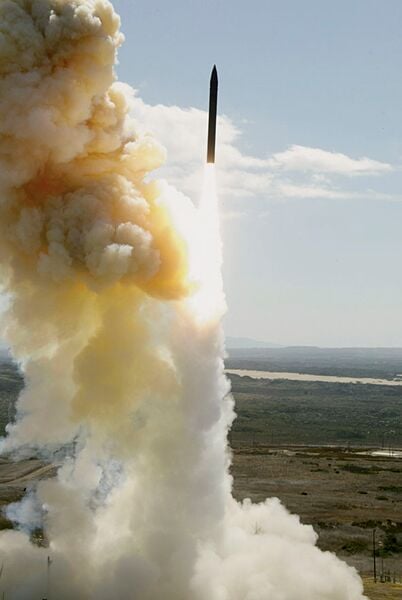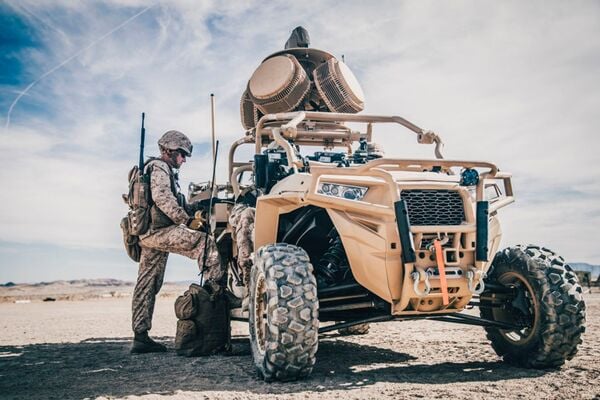- About
- Intara
- Capabilities
- Advisory
- Resources
- News
- Store
Hammer and shield: Russia's modernised radar and early warning systems
25 February 2022
by Naqi Wasif


Russian ABM radar coverage from long-range systems is shown in this screenshot from a news article on the main missile warning centre in Moscow posted by the Russian Ministry of Defence on 16 February 2022. (mil.ru)
The large-scale movement of Russian forces into positions near its border with Ukraine and into Belarus' territory included the Russian Armed Forces' latest air- and missile-defence capabilities, which have become a key component in its military doctrine after the significant modernisation of capabilities.
Following a brief period of restructuring in 1997, Russia's air defence forces were realigned to the legacy role of denying adversaries air superiority through strategic deterrence, as well as offering mobile support for ground elements, and maintaining anti-access/area denial (A2/AD) readiness. This has been achieved through an integrated and layered sensor network for air- and anti-ballistic missile (ABM) defence that operates across an extensive command-and-control (C2) infrastructure.
Command and conquer
The Federal System for Aerospace Reconnaissance and Control (FSASRC) (Russian: FSR KVP) is operated by the Russian Air Force Radio-Technical Troops (RTV VKS) and is key to the air and space defence of the Russian Federation. Established in 1994 by a presidential decree, the FSR KVP is a combination of interrelated forces, facilities, and systems that work to deliver a consolidated, comprehensive, and real-time picture of the air environment. The FSR KVP is able to draw on civilian air traffic control (ATC) radar, military air surveillance radar networks – including monitoring identification friend-or-foe (IFF) and aircraft transponders – and dual-purpose electronic intelligence (ELINT) stations.
The FSR KVP is a unified automated radar system that enables data exchange between civilian ATC and military air surveillance networks through a complex exchange for collection, processing, and distribution of data using the VIP-117M3 radar data pickup module.
A typical VIP-117M3 mobile station uses high-speed data channels to maintain situational awareness across a 3,200 km 2 area for targets operating at a maximum altitude of 100 km. Commands can be issued to fighter interceptors for six to eight air targets via two navigator workstations. 3D ATC radar, such as the 12A6 Sopka-2, have been deployed countrywide in Russia and Belarus, and besides primary air surveillance capabilities they are fitted with both IFF Mk-X secondary surveillance systems and the successor to the Soviet ‘Parol' IFF system – the unified system of radar IFF (ES GRLO). In addition, the 48Ya6 Podlet mobile primary and secondary air surveillance radars are operated by the RTV VKS, providing a similar function in a deployable capacity.
The FSR KVP is undergoing its third phase of development since 2015, and includes subsystems for operations in the Arctic, as well as new radar sources for the detection and tracking of hypersonic and ballistic air targets. The Voronezh and Rezonans radar complexes are the latest radars to have been inducted into the system for tracking ballistic and hypersonic threats respectively. By the end of 2021, five 77Ya6 Voronezh and four 77Ya6-DM Voronezh-DM stations had been deployed around Russia to give all-round coverage, and five 69Ya6 Rezonans radars had been deployed in the Arctic Circle area to provide early warning of hypersonic air targets.
The Voronezh-M radar has a processing capacity of 100 billion operations/second, and the Rezonans computing system consists of a series of single-board quad-core seventh generation computers and uses artificial intelligence (AI) to enhance the cognitive function of the radar for tracking hypersonic targets. The radars can simultaneously interface with command posts and automated control systems (ACS) of air-defence systems, in particular with the Polyana-D4M1 complex; VIP-117M3; Akatsiya; CP-1; Galaktika ATC integrated control system; HLCP-2; and the S-350, S-300, S-300V, and S-400 ground-based air-defence systems.
In Tor they trust
The Russian PVO SV (Air Defence Troops of the Ground Forces) provide mobile air-defence batteries in the Russian Army's areas of operation, with assets that range from Igla and Strela manportable air-defence systems (MANPADs) to ZSU-23-4 Shilka and the S-300V4.
The 9S52M1 Polyana-D4M1 automated brigade command system can designate targets to air defence assets within two to three seconds and draws on inputs from up to three external and three ‘organic' radar sources. It can control up to six air defence battalions in a 1,600 km 2 area, and simultaneously maintain 500 tracks and 256 air targets. Targets with a maximum altitude of 51 km and travelling at speeds of up to 2.5 km/s can be assigned for engagement by Tor, Buk, and S-300V batteries via eight combat control and three planning workstations.
The S-300V4 (SA-12/23 Giant/Gladiator) operates at the highest level of mobile air defence in the PVO SV, and is unique in being the only fully mobile anti-intermediate and tactical ballistic missile and surface-to-air missile (SAM) system in the world. The S-300V was originally designed for detecting and tracking missile raids by the MGM-31 Pershing class of intermediate-range ballistic missiles (IRBMs), as well as the AGM-69 class of air-to-surface short-range attack missiles (SRAMs), and the Air-Sol Moyenne Portée/-Amélioré (ASMP/ASMP-A), including when operating under conditions of active radar jamming; the system employs semi-active radar homing (SARH) missiles.
Deployed at the battalion level, the S-300V4 is comprised of a target detection and designation unit (DDU) and up to four batteries of launchers. Each DDU has a 9S457M command post (CP) that receives information from external sources via the Polyana-D4M1 system, a 9S15M ‘Bill Board' all-round surveillance radar, and a 9S19M Imbir ‘High Screen' sector surveillance radar. Each battery includes a 9S32M ‘Grill Screen' multichannel missile guidance radar (MMGR), and 9A82 transporter/erector/launcher and radar (TELAR) each with four 9M83M-1 missiles and/or 9A83 TELARs with two 9M82M-1 missiles in transport-launch containers (TLC).
Continuous-wave (CW) illuminators are included with the 9A82 TELAR on a steerable high-gain antenna that is mounted on the front of the vehicle roof, which is used to transmit mid-course guidance commands to the missile.
The system has a maximum interception range of 400 km against targets at an altitude of up to 40 km. Once the missiles are fired, the TELAR works with the battery's ‘Grill Screen' radar by ‘gathering' the missile in its radar beam and transmitting the necessary guidance course correction signals to intercept the target. When operating under conditions of active jamming, the ‘co-ordinate support' mode is used, whereby the range to the target is determined using the target detection radars (9S15M Obzor-3 and 9S19M Imbir), and its angular co-ordinates by the 9S32M ‘Grill Screen' missile guidance radar. This focuses a high amount of radio frequency (RF) energy from different sources for continuous wave illumination to the 9M82/9M83 missiles' semi-active radar seekers during the terminal guidance phase of the engagement.
While open-source intelligence (OSINT) has identified the deployment of the S-300V4, the veracity of this information can be difficult to confirm because of the availability of highly realistic decoys based on obsolete PT-76 tanks. The LPPU-83 (Lozhnaya Podvizhnaya Puskovaya Ustanovka – Self-Propelled Launcher Decoy) mimics the 9A83 (9A83-1) TELAR vehicles used by the S-300V, but utilises the PT-76 light-tank chassis rather than the real vehicle's tracked platform.
The 9A83, a modern derivative of the full-tracked MT-T tractor chassis (originally designed and built at the Kharkov Morozov Machine Building Design Bureau in Ukraine), has seven road wheels per side while the PT-76 has only six per side. However, the rebuild to the LPPU-83 configuration stretches the chassis, adds a seventh roadwheel, and fits a 9A83-style crew cabin. Since it is powered by a diesel engine, it will have a suitable thermal signature, but it is not known whether the simulated tracking radar can emit the appropriate RF signature.
At the medium-SAM range of up to 100 km, the SA-11 ‘Gadfly'/ SA-17 ‘Grizzly' 9K317 Buk-M2/M3 can defend against unmanned aircraft, supersonic cruise missiles, aircraft, and short-range or theatre ballistic missiles (TBMs) at ranges from 3 km to 70 km and altitudes between 5 m to 35 km, with target speeds of up to 3 km/s. The vehicle takes five minutes to switch between road march state to its ready state, and is capable of repositioning in its ready state, but requires 20 seconds to return to full readiness after repositioning. A brigade capability would be controlled by one Polyana-D4M1 vehicle with four divizions, with each divizion fire unit consisting of one 9S18 Kupol search radar, one 9S510 vehicle, and three SAM batteries. A typical Buk battery will feature 2-3 TELAR vehicles, with each having its own 9S36 fire-control and missile guidance radar, four ready-to-launch missiles, one 9A36 target illumination radar, and two 9A316 transloader vehicles that are also capable of firing four missiles. Each 9S36 fire-control radar is capable of tracking 10 targets and illuminating four targets simultaneously, while the Buk-M3's 9A36 radar can track 10 and engage six targets at a distance of up to 120 km. The Buk-M3's 9M317M missile has active radar homing, while earlier missiles had SARH guidance. Each Buk-M3 TELAR can carry up to six missiles in canisters
At the lowest level the 9K331 Tor-M2 is designed for engaging aircraft, cruise missiles, and unmanned platforms. It carries 16 ready-to-launch 9M338K missiles (earlier versions carry eight 9M331 missiles in canisters). It is capable of engaging four air targets simultaneously with a fire interval of two seconds, the system can engage targets at a range of 1.5–16 km and altitudes from 10 m to 12 km. It also has a launch on the move capability that supports missile firing when travelling at up to 40 km/h. Two Tor systems can be networked and can exchange information via radio datalink, and may be positioned at a maximum of 5 km from one another.
A single 9S932-1 MRU-B vehicle equipped with the 1L122-1 radar – as part of the 9S931 Barnaul-T tactical level subsystem – can communicate with up to two higher-level control modules (9S931-1 or 9S931) and up to six lower-level modules (9S933 or 9S935), as well as Tor air-defence systems, and standalone radar systems. Target allocation commands are sent to lower-level units, while combat activity reports are passed to higher levels, with the system handling up to 100 targets. The 1L122 radar is also fitted with the Barrier-E bistatic system for the detection of low-flying targets and can acquire and maintain up to 30.
Two Royal Malaysian Navy helicopters collide mid-air
23 April 2024
by Ridzwan Rahmat


A file image of a Royal Malaysian Navy AW139 helicopter landing at Lumut. One of the airframes was involved in a 23 April 2024 accident that killed 10 personnel. (Royal Malaysian Navy)
Ten personnel are dead after two Royal Malaysian Navy (RMN) helicopters collided during a rehearsal for the service's 90th anniversary parade, the service disclosed in a media statement on 23 April.
All personnel are from the two helicopters involved, namely a Leonardo AW139 medium-lift rotorcraft and an AS 555SN Fennec airframe, the statement added.
The service has since confirmed to Janes that the AW139 bears the serial number M503-3 while the Fennec was registered with the serial number M502-5.
The aircraft collided at 0932 h local time while they were flying over the RMN's Lumut naval base.
A video of the mid-air collision that began circulating on instant messaging apps shortly after the accident indicates that the Fennec's main rotor clipped the AW139 on the latter's port side while both aircraft were making a right turn during a fly-past segment of the rehearsal.
Lockheed Martin snags multibillion-dollar NGI contract
16 April 2024
by Meredith Roaten


The Ground-Based Interceptor was launched from Vandenberg Air Force Base in California to simulate a combat launch from Fort Greely in Alaska. (Missile Defense Agency)
The Next Generation Interceptor (NGI) competition has come to an end as Lockheed Martin was selected as the prime to continue development of the weapon through critical design review (CDR), all-up round qualification, integration with the Ground-Based Midcourse Defense (GMD) system, and flight testing, the US Missile Defense Agency (MDA) announced on 15 April.
While no dollar amount was attached to initial statements on the contract, the Pentagon's Cost Assessment and Program Evaluation (CAPE) said in a 2021 report that it expected NGI to accrue roughly USD17.7 billion in contract costs. The downselect for Lockheed Martin will lead to a follow-on production and emplacement contract to support initial operational capability for NGI by the fourth quarter of fiscal year (FY) 2028, according to the announcement.
The MDA cited “technical maturity”, “technical rigor” in the design process, and contract-provided performance date as key factors that supported its decision.
Lieutenant General Heath Collins, director of the MDA, called the decision “very difficult” in a statement but said the agency was “confident”.
USMC plans to buy high-power ULTV variant
11 April 2024
by Aaron Lin


A marine programs a counter-unmanned aircraft system on a Light Marine Air Defense Integrated System (LMADIS) during a predeployment training exercise at Marine Corps Air Ground Combat Center, Twentynine Palms, California. (US Marine Corps)
The Ultra Light Tactical Vehicle (ULTV) programme – a US Marine Corps (USMC) replacement for the ageing Utility Task Vehicle (UTV) – will now include a variant with more exportable power, according to Janes analysis of budget documents.
The fiscal year (FY) 2025 budget request is the first time the ULTV-High Power (ULTV-HP) has funding for procurement, adding up to roughly USD5.99 million for 40 vehicles in that year. USMC justification documents indicate that it “provides exportable electrical power generation in support of the requirements for [the] kill web integrating system”.
The large-scale movement of Russian forces into positions near its border with Ukraine and into Bela...
Latest Podcasts
Iran Israel analysis
In this podcast Janes analysts discuss the Iranian attacks on Israel on the 14 April. They highlight the military systems used by Iran and the performance and impact of these on Israel. They also discuss the implications of this attack goi...
Listen nowJanes Case Studies
Using Janes Intara to build a common intelligence picture: Russian build up on the Ukrainian border
View Case StudyNews Categories
 Security Details
Security Details